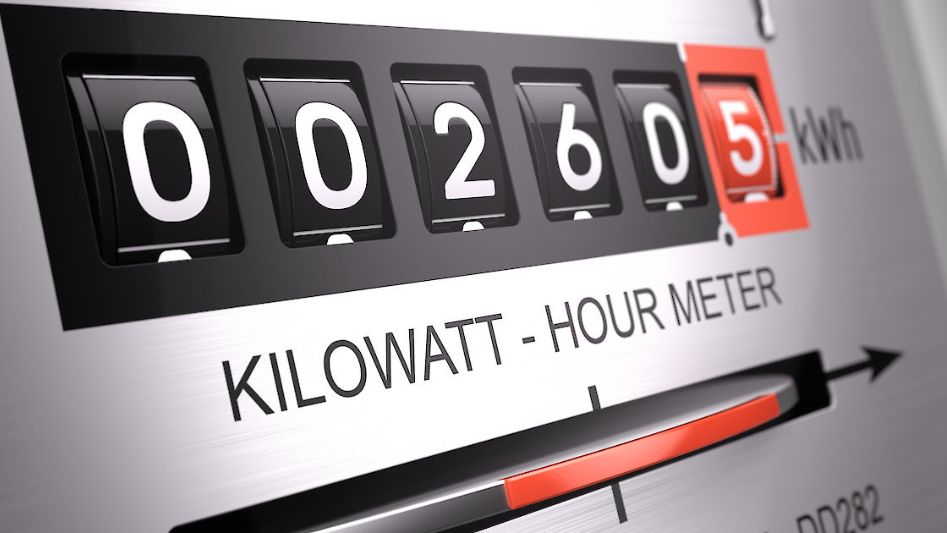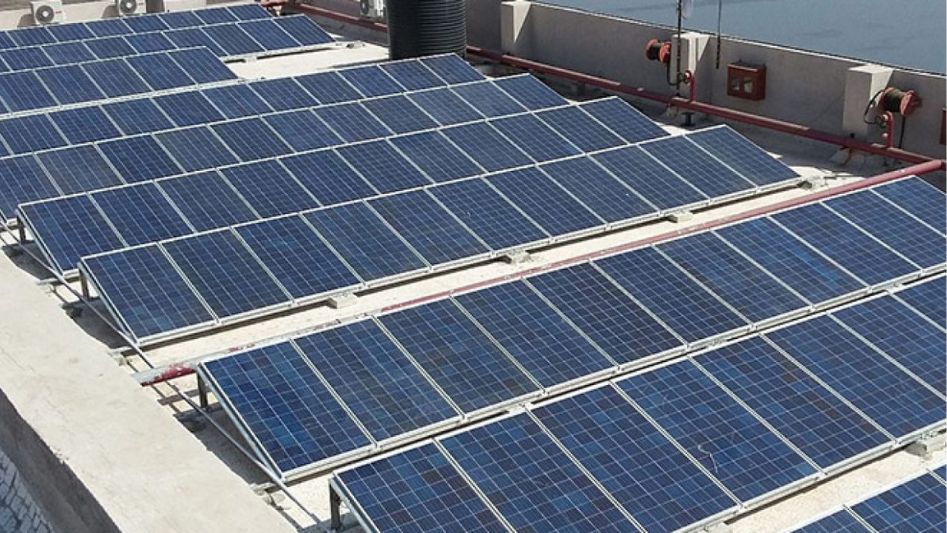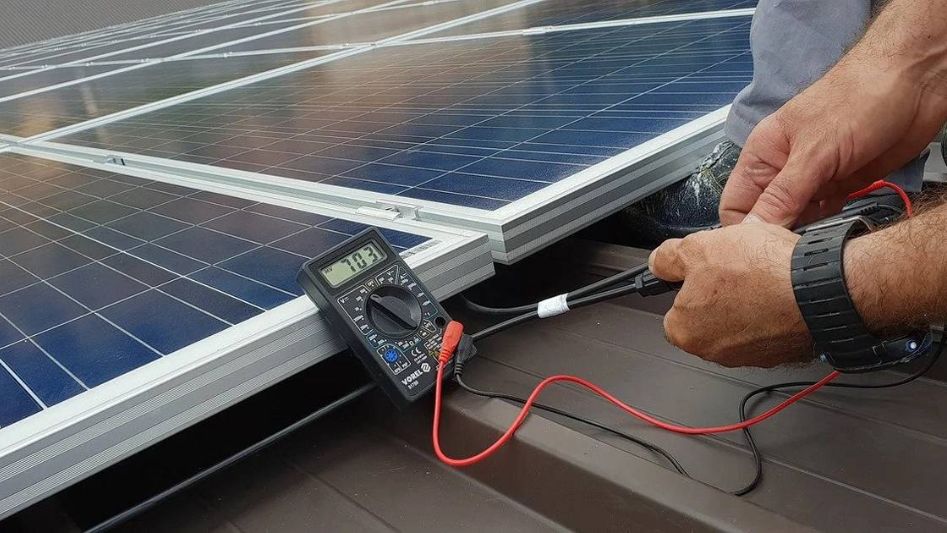It is essential to calculate solar panels output before installing them on your roof or the ground. But, how you can calculate your solar photovoltaic array depends on various variables
Table Of Content
- Introduction
- How to Calculate Solar Panels Output
- Determine the Standard Test Conditions
- The Efficiency of Solar Panels
- How Orientation and Location Affect Solar Output
- Solar Output Calculations
- Conclusion
- FAQ
- You May Also Like
- External Links
When investing in solar energy, you want to maximize your return. The amount of energy your solar panels produce is dependent on several things. The size, efficiency, and direction of the panels are only a few variables. Prior to having solar panels installed on your home’s roof or ground, it is crucial that you determine how much energy they will produce.

Panels’ rated power outputs are typically between 250 and 400 watts. There are several factors to consider when determining how to calculate your solar photovoltaic array. This article will discuss methods for accomplishing this goal.
How to Calculate Solar Panels Output
When determining the outcome, you should take into account the following factors:
- The effectiveness of your solar panels
- Your location
- Your solar panels’ orientation
There are more factors that may have a decisive impact on the final result. Of course, they are the most important ones.
Determine the Standard Test Conditions
As a first step, you might investigate the factors that affect the wattage of solar panels. As was previously said, the wattage is often between 250 and 400. This, however, does not guarantee that your PVs will consistently produce this much power. When everything goes perfectly, the efficiency figure represents a range of possible results.
Standard Test Conditions (STC) are established in a controlled environment after solar panels have been tested. PV modules are typically tested at a temperature of 77 degrees Fahrenheit in an area receiving 1000 watts of sunshine per square mile.
In this ideal scenario, a panel rated at 250 watts will produce precisely 250 watts of power. These examinations are performed in a laboratory setting. The modules’ effectiveness in the actual world is affected by:
The Efficiency of Solar Panels
While wattage tells you how much power your solar panels can generate, efficiency shows you how much energy they can extract from the sun.
A quick example: An efficiency of 15% indicates that the solar panels are only able to harness and use 15% of the sunlight that hits the PV cells. Efficiency is affected by a number of things. The panels include solar cells, whose efficiency may be adjusted according to how reflective they are. Less reflective cell surfaces will allow more sunlight to enter the cells instead of being reflected back into space.
The efficiency of a rooftop may also be affected by the surface that surrounds it. There are a number of elements that tend to be present, but the most prevalent ones are:
- Whether from neighboring buildings or trees, if it is shady. No matter what, you must never shade. Tree pruning and correct panel installation might help you achieve this goal.
- Smog, pollution, and dust are prevalent. These are all potential threats to solar panels’ durability. Your panels may be periodically maintained by hiring a professional cleaning service.
- Heavy cloudiness. There is nothing you can do to prevent this since it is a natural occurrence. To put your mind at ease, solar panels can still generate power on foggy days or during gloomy periods.
- Prospects of snowfall.

How Orientation and Location Affect Solar Output
Depending on your latitude, solar panels will be able to generate a certain quantity of power. Historically, the Southwest, with its plentiful sunshine, was the first to embrace solar power.
The more sunlight that is directed to solar panels, the more energy they will produce. However, solar energy is useful everywhere, even in the Arctic.
Your solar panels’ efficiency also depends on their orientation. Energy production will increase if your panels are oriented to take advantage of the sun’s rays coming from the direction with the most hours of sunshine. Installation of solar panels is best done toward the south or west, depending on latitude. Distinctions in the available physical space and surrounding surroundings might also play a role in this choice.
Solar Output Calculations
Let’s start plugging numbers into equations. When using solar panels, the output may be easily calculated using the following formula:
Average hours of sunlight × solar panel watts x 75% = daily watt-hours
To start, considering all of the aforementioned factors, 75% is an adequate account. Let’s have a look at a real-world instance now.
Let’s say your panel is rated at 290 watts and you reside somewhere where you get roughly 5 hours of sunshine every day on average. This is how you figure out how much energy your solar panels produce:
5 hours x 290 watts x 0.75 = 1,087.5 daily watt-hours
Simply dividing the number by 1000 will give you the equivalent in terms more often seen on an electricity or gas bill.
That will be 1.0875 kilowatt-hours per solar panel.
When making the switch to solar energy, calculating the output of solar panels should not be a stressful ordeal. To aid you in this endeavor, you should seek out reliable solar calculators. If you consult with most businesses, they will also help you with this. The efficiency of your solar panels is another factor that should be taken into account.
In order to help you plan for the cost of solar panels and installation, Dynamic SLR provides free solar quotes. Getting in contact with us immediately can assist you in making the switch from traditional power to solar energy. In the great state of Texas, you may get only the finest goods and most trustworthy services.
Conclusion
If you answer the above questions, you’ll have a good sense of how many solar panels you’ll need to meet your power demands, or at least a reasonable range. The next step is to have a professional installer evaluate your roof’s layout, its orientation with respect to the sun, and other considerations to determine whether or not you can practically arrange the necessary number of panels on your roof to meet your daily energy production objectives.
FAQ
What factors into the cost of solar energy?
Your daily peak solar hours may be converted into watts by dividing your average hourly wattage need. This is the required hourly output for your solar panels. Therefore, 6,000 watts of solar panels would be required to power the typical U.S. house (900 kWh/month) at a location with five peak sunshine hours each day.

How many solar panels do I need for a 5kva inverter?
If 5 kW is needed, how many solar panels would that be? If you utilize 370-watt panels (the minimum required for a 5 kW system), you will need 14 of them, bringing the total to 5.18 kW.
How do you calculate solar cost per unit?
Expense per watt (or $/W) is the ratio of the entire cost of the system you’re evaluating to the total watts of power it provides. A solar power system with a 5-kilowatt output, for instance, produces 5000 watts. The cost per watt would be $3 if the system cost $15,000 ($15,000 divided by 5000W).
You May Also Like
- SOLAR INCENTIVES EXPLAINED: TAX CREDITS, REBATES, AND OTHER INCENTIVES
- AGRIVOLTAICS: WHERE SOLAR ENERGY MEETS AGRICULTURE
- WHAT IS THE CARBON FOOTPRINT OF A SOLAR PANEL? OVERVIEW AND EMISSIONS
- SOLAR OR WIND ENERGY? DO YOU KNOW WHICH ONE TO CHOOSE IN 2022?
- IS SOLAR ENERGY RENEWABLE OR NONRENEWABLE?
